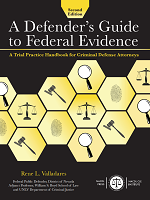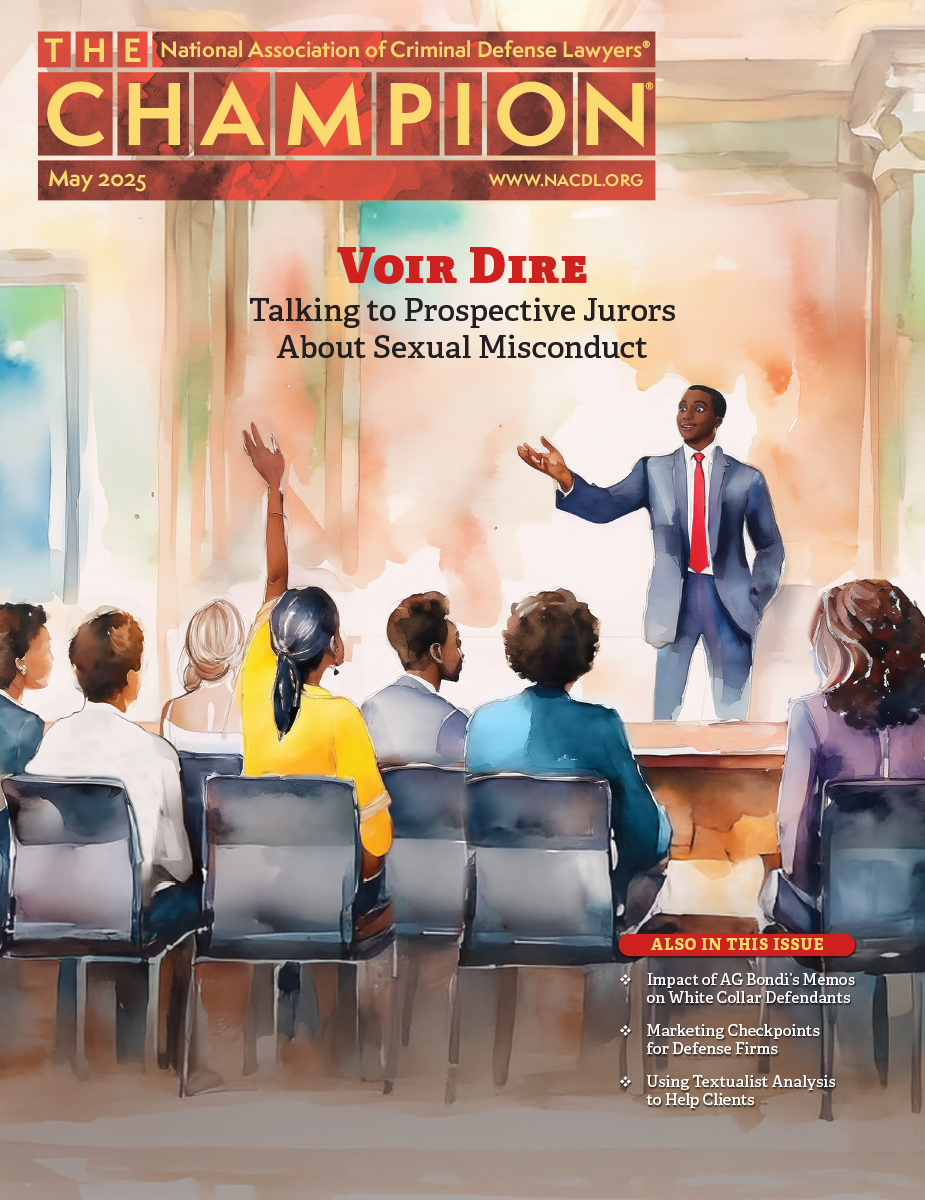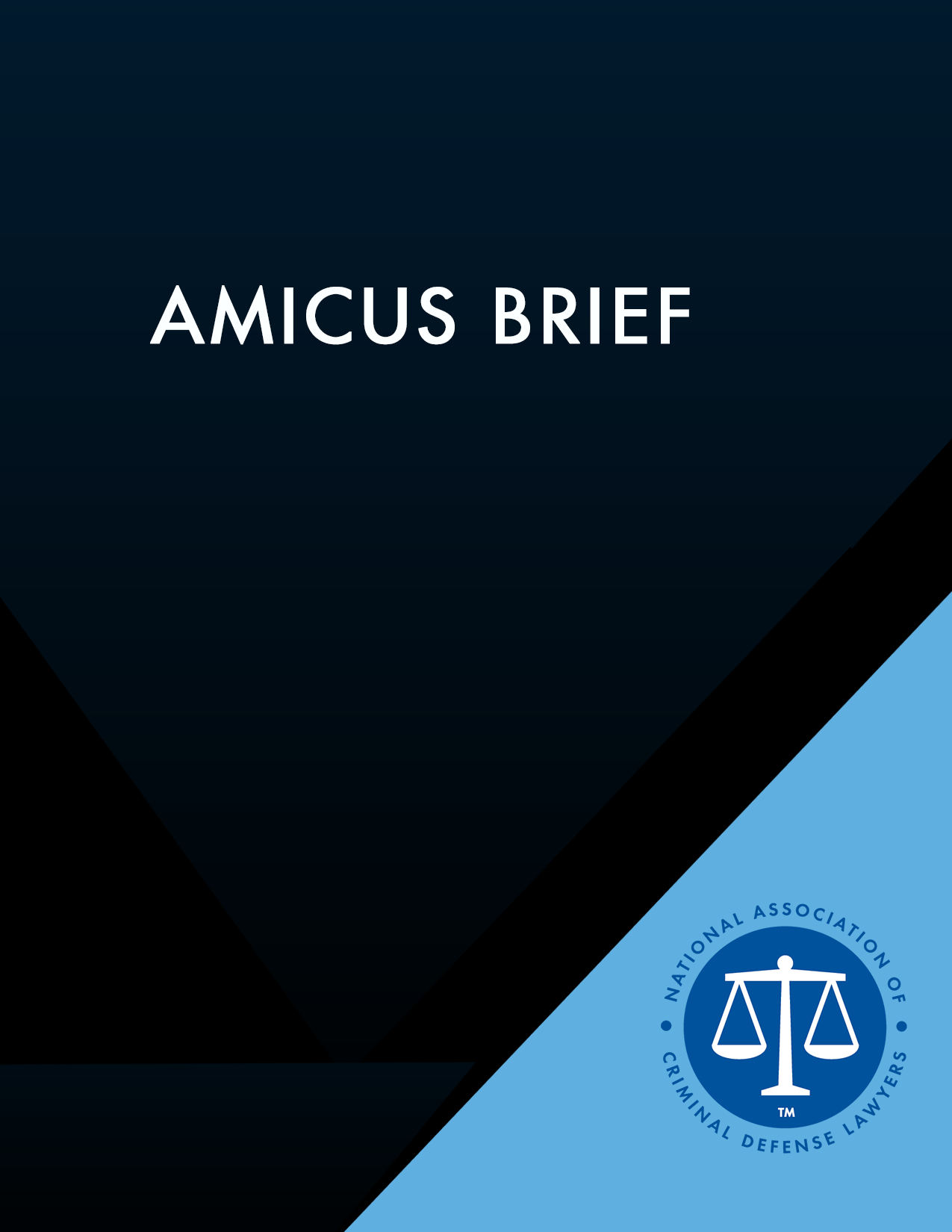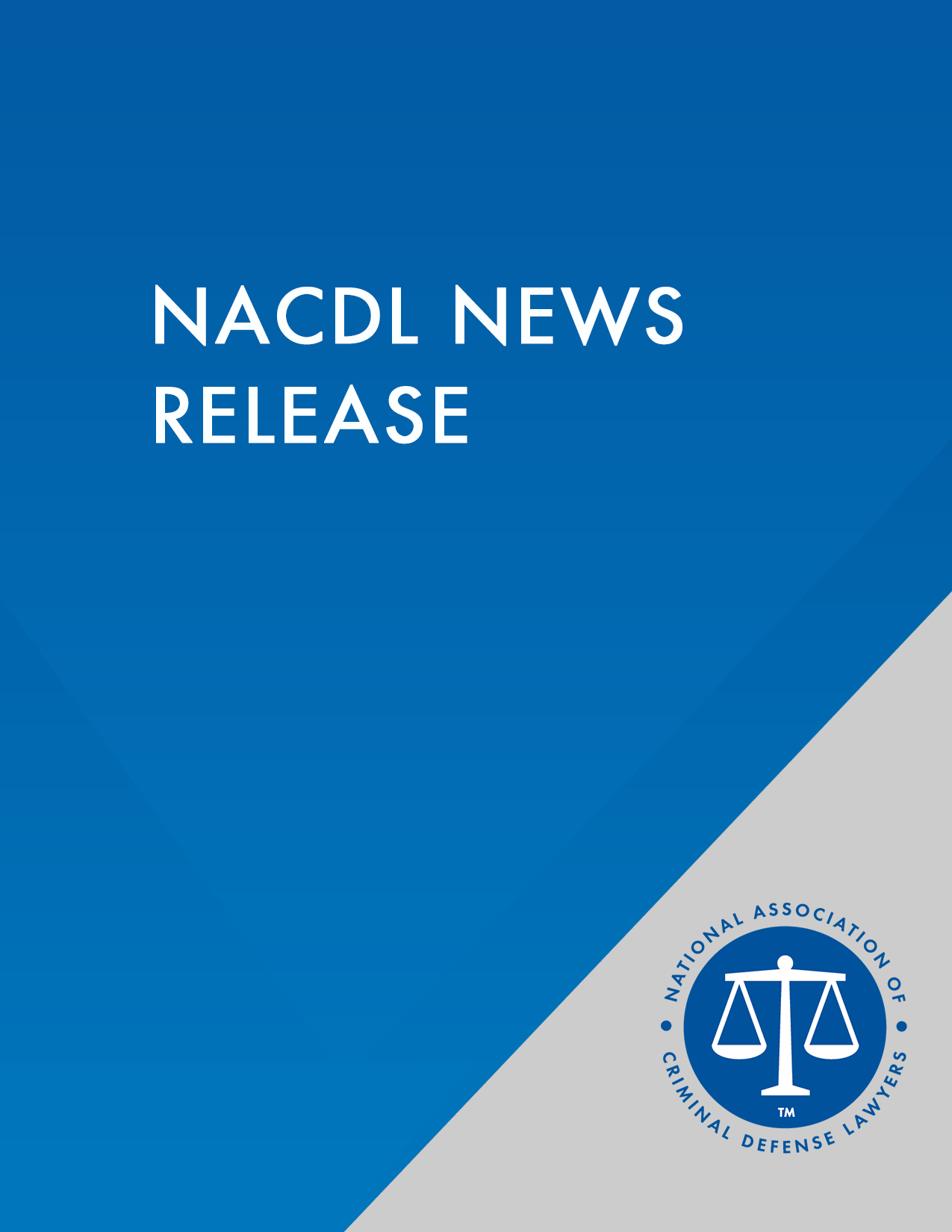Access to The Champion archive is one of many exclusive member benefits. It’s normally restricted to just NACDL members. However, this content, and others like it, is available to everyone in order to educate the public on why criminal justice reform is a necessity.
Approximately 18 months ago, NACDL conducted a membership survey. The results of this survey, compared with the last such survey we conducted (in 1991), reveal some disturbing facts. Our membership is just as white as it was ten years ago, is eight years older, and is no richer.
Our membership in 2001 was 95 percent white, the same percentage as in 1991. We obviously have too few African Americans, Latinos, Asian Americans and Native Americans, and we must make special efforts to attract them. To be sure, this is not an easy task. In the past year, I have met with the presidents of the major bar associations representing these groups, and they have told me of their own difficulty in attracting criminal defense attorneys.
Our president of three years ago is African American. Two of our six current officers are women. Our Board of Directors is diverse in terms of geography, practice and gender. However, our Board, while over 30 percent female, has only two African Americans, two Latinos and no Asian Americans or Native Americans. It pains me that we look less like America than the Bush cabinet. (Our membership in 1991 was 93 percent male, in 2001 it was 82.5 percent male.)
We have in the past years made special efforts to attract minority lawyers. One year ago our spring CLE program in Cincinnati was devoted to racism in the criminal justice system. Yet we have not been very successful in the area of minority recruitment, and we clearly must do more.
Our nominating committee must set an affirmative goal to increase the number of minority Board members, and should give preference to minority lawyers. Our CLE programs must include minority speakers. Our members must make special efforts to recruit minority attorneys. And our leadership must seek and encourage minority members to become more active in the NACDL.
We must also realize that our programs are expensive and that many minority (and non-minority) members cannot afford to attend our CLE programs or committee meetings. I have established out of my president’s discretionary fund a scholarship program which will provide up to four minority members with free tuition and events at each CLE program. I hope that our foundation, the Foundation for Criminal Justice, will eventually take over this program. I also note that our equal access fund provides financial assistance to any officer or director who otherwise would be financially unable to attend Board meetings, and that scholarships for our CLE programs are available for those members in need.
The average age of an NACDL member in 2001 was 48 years old; in 1991 it was 40. I suspect that this aging is more reflective of the profession than the NACDL itself. It reflects the graying of the criminal defense bar as a whole and the comparative financial unattractiveness of the profession to young lawyers burdened with student loan debt or otherwise interested in financial reward. In any case, it is a startling fact which we cannot ignore.
We must recruit young lawyers. The membership fee for a lawyer in private practice admitted fewer than three years is $140, slightly more than half a regular membership. We have also started our Internet listserv which provides a means for less experienced attorneys to receive guidance on problems or issues from experienced mem- bers. Gift memberships for new members, a wonderful gift to a newly admitted lawyer or young lawyer entering private practice, are only $100. Public defender rates are $125 per year regardless of experience. Law student rates are $65 per year.
The survey also showed that, adjusted for inflation, our members in 2001 made approximately the same income as they did ten years earlier. More than half (53.5 percent) of our members earned less than $100,000 per year; 12 percent made over $250,000. Nineteen percent of our members were public defenders; of those, more than half (53 percent) earned less than $75,000.
The lack of growth in real income, especially considering the increase in age and experience (19 years in the 2001 survey; 15 in 1991), is depressing. The causes are many: the large number of private practitioners who have left prosecutor’s or public defender’s offices; the attraction of more lucrative areas of practice; the disallowance of legal fees by forfeiture or seizure; the threat of indictment for accepting “dirty money;” the poor pay for court-appointed counsel; the minimal screening of defendants for public defender eligibility; new courts that emphasize social work over lawyering; the increase in low-cost, mass production lawyers who attract clients by heavy advertising; and a criminal justice system that discourages innovative and energetic advocacy by excessively rewarding guilty pleas — particularly those involving cooperation those involving — and excessively punishing those who exercise their constitutional right to trial.
Some solutions are obvious: court-assigned attorneys must be paid a reasonable wage and we must all press for legislation and judicial decisions that assure a client’s right to counsel of choice. Others are less clear. Most will be resisted by courts, prosecutors and other government authorities.
What is clear is that we must be vigilant and strong and not shy in fighting for our own financial interests. Otherwise, I am afraid that at least the private defense bar, so important in challenging our criminal justice system and defending our constitutional rights, will go the way of the neighborhood pharmacy.











